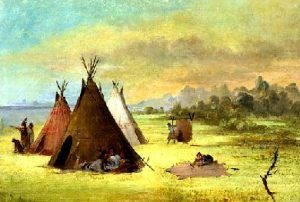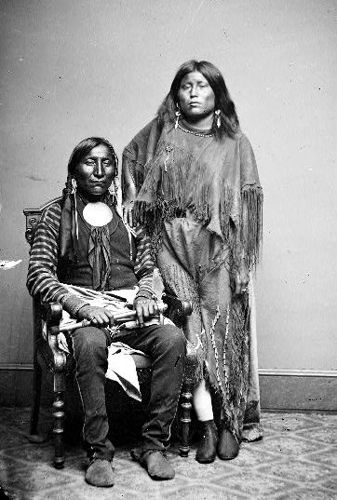Kiowa Chief Lone Wolf, known as Gui-Pah-Go to his tribe, was born about 1820. When he grew up, he became a primary chief of the Kiowa tribe and was involved in the negotiations of the Arkansas Treaty in 1865 and the Medicine Lodge Treaty in 1867, which required for the Kiowa to be placed on a reservation. However, when the tribe delayed moving to the reservation, Satanta and Lone Wolf were seized by General George A. Custer and held as hostages until the migration took place. By the 1870s, numerous Kiowa leaders were unhappy with the reservation system and began to make attacks upon wagon trains in Texas.
Though Lone Wolf counseled peace, he was not always able to control the actions of other Kiowa leaders and was present when Satanta, Setangya, and Big Tree were arrested at Fort Sill, Oklahoma. However, by the next year, Lone Wolf, too, was participating in the raids, and on April 30, 1872, he engaged in the attack on a government wagon train on the San Antonio-El Paso Road, in which 17 Mexican teamsters were killed. He and his warriors then fought off a patrol of the Ninth United States Cavalry from Fort Concho.
In the fall of 1872, Lone Wolf traveled to Washington D.C. for a peace conference and used his influence to secure the parole of Satanta and Big Tree. However, when his son, Tau-ankia, and nephew, Guitan, were killed by cavalry troops in December 1873, his hatred of the white man was fueled, and he was among the participants in the attack on Adobe Walls on June 27, 1874. He also participated in the Lost Valley Fight the following month. In late August, he and his warriors raided the agency at Anadarko, Oklahoma. They fled to the Texas Panhandle, where they made an unsuccessful attack on a wagon train the following month. He and his braves then retreated into Palo Duro Canyon, and in retaliation, Colonel Ranald S. Mackenzie and his troops destroyed Lone Wolf’s village.
Despondent and famished, Lone Wolf finally surrendered his band to the military authorities at Fort Sill, Oklahoma, in February 1875 and was sent to prison at Fort Marion, Florida, where he contracted malaria. He was later released and returned to Fort Sill, where he died in the summer of 1879. He was buried somewhere in the Wichita Mountains near Mount Scott.
© Kathy Weiser-Alexander/Legends of America, updated July 2021.
Also See:


